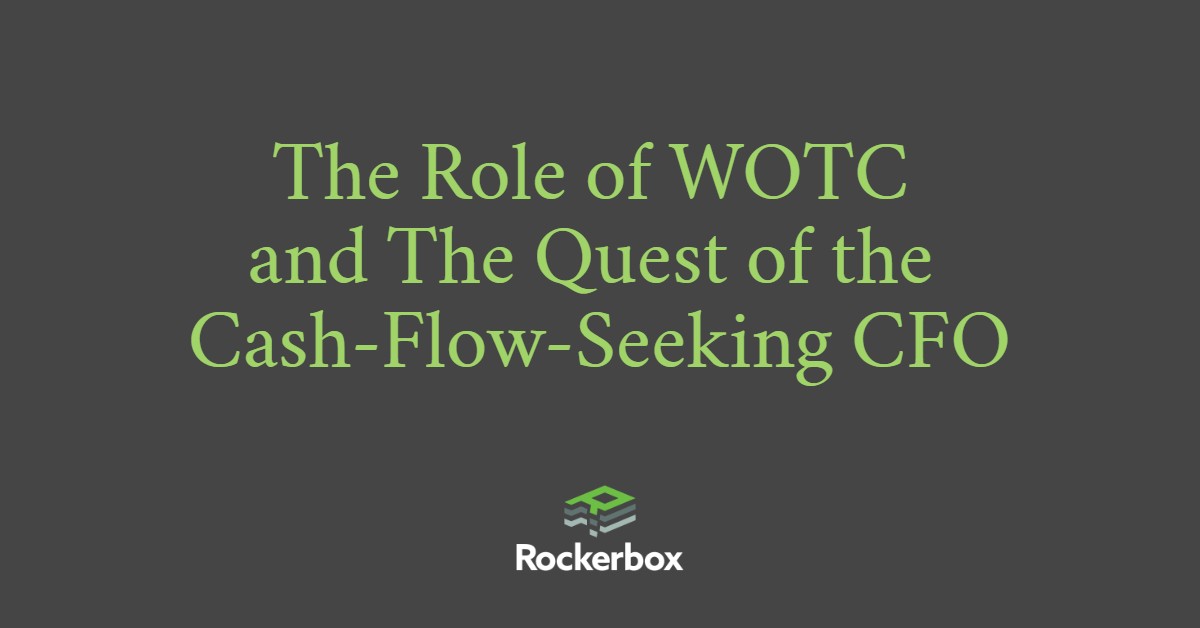
In a bustling city stood a thriving food service provider known for its quality meals and exceptional service. At its helm of financial stewardship was a diligent and sharp CFO named Michael. His mission: to find innovative ways to improve the company’s cash flow and strengthen its financial position.
For months, Michael embarked on his quest, diving deep into spreadsheets, meeting with department heads, and analyzing every nook and cranny of the company’s operations.
The Search for Savings
Michael explored cost-saving measures, slashing unnecessary expenses wherever possible. He renegotiated vendor agreements, seeking better terms and prices. The procurement team reviewed inventory management strategies, reducing waste and optimizing purchasing.
While these efforts brought marginal improvements, they fell short of the transformative results Michael was seeking. The CFO knew he needed something more—something powerful yet practical.
The Discovery of WOTC
One day, during a routine meeting with a consultant, Michael heard about a program called the Work Opportunity Tax Credit (WOTC). The consultant explained that WOTC rewards businesses for hiring individuals from certain target groups, such as veterans, SNAP recipients, TANF participants, and ex-felons.
Intrigued, Michael began researching. He learned that the program could provide tax credits ranging from $1,200 to $9,600 per eligible employee hired. Most importantly, implementing WOTC was low-cost, efficient, and could yield substantial financial benefits.
Implementation and Impact
With the board’s approval, Michael launched the WOTC program.
- Time to Launch: Less than 10 hours.
- Ongoing Management: Just 30 minutes per month.
Within the first year, the results were staggering. Cash flow improved by 20%, unlocking approximately $415,000 in savings. This newfound financial strength allowed the company to:
- Upgrade its aging plant facilities, enhancing productivity.
- Expand operations by hiring additional workers and increasing production capacity.
In year two, the WOTC program’s impact grew, improving cash flow by 36%. Revenues soared as the company reached new markets and increased its output.
A Transformative ROI
Michael proudly shared with the owners and management team that WOTC had delivered nearly four-figure ROI. Unlike other initiatives, this program required minimal capital and time investment while generating outsized results.
“The beauty of WOTC,” Michael explained, “is that it’s one of the few levers in our business that can produce these kinds of results in under two years.”
Additional Benefits Beyond Numbers
The WOTC program didn’t just bolster the company’s finances—it had a profound impact on the community and workforce:
- Second-Chance Hiring: By recruiting from WOTC target groups, the company provided meaningful jobs to veterans, SNAP and TANF recipients, and ex-felons.
- Community Recognition: The company became known as an inclusive and socially responsible employer, celebrated for its commitment to second-chance hiring.
- Employee Transformation: HR noted how these hires found stability and self-sufficiency through their new roles, further contributing to a stronger, more connected community.
Celebration and Legacy
Michael’s success was celebrated across the company. The owners lauded his vision and leadership, the management team admired his ability to unlock growth, and the community recognized the company as a force for good.
As Michael reflected, he marveled at how a program as simple as WOTC could bring such transformative change. It wasn’t just a tool for cash flow—it was a catalyst for growth, inclusion, and a better future for everyone involved.
Moral of the Story: Sometimes, the most impactful solutions are the ones hiding in plain sight. For businesses looking to improve cash flow, invest in their workforce, and make a lasting impact, the Work Opportunity Tax Credit might just be the key.